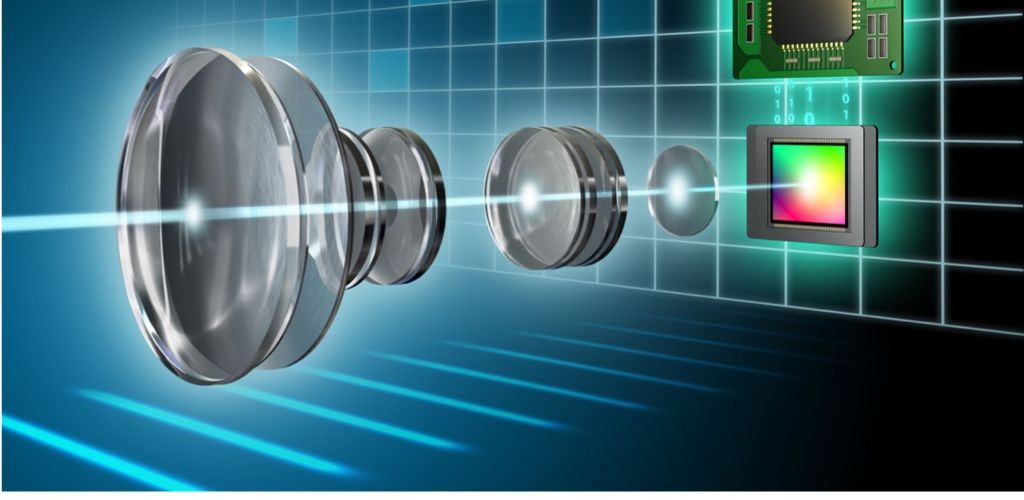Computational Imaging
Computational Imaging jointly designs optics and algorithms. This field of research is inherently interdisciplinary, combining expertise in imaging science, optical engineering, signal processing and machine learning. Computational imaging can overcome physical limitations and achieve novel capabilities, from advancing experimental observation techniques used in biology, to highly novel imaging system methods to atomic force microscopy. Computational Imaging serves a broad range of scientific, defense and security, biomedical, and neuroscience applications.
High-content High-speed Chemical Imaging of Metabolic Reprogramming by Integration of Advanced Instrumentation and Data Science
The goal of this project is to develop two complementary stimulated Raman scattering imaging platforms that will allow high-speed, high-content, and high-sensitivity mapping of cell metabolism by synergistic integration of advanced instrumentation and data science.
Joshua Rapp wins 2021 IEEE Signal Processing Society Best Ph.D. Dissertation Award
Boston University alumnus Joshua Rapp (Ph.D. ECE ’20) has won the 2021 IEEE Signal Processing Society Best Ph.D. Dissertation Award. Rapp, now a Research Scientist at Mitsubishi Electric Research Laboratories (MERL), was a student of CISE faculty affiliate Vivek Goyal, Professor and Associate Chair of Doctoral Programs (ECE) at Boston University. “I never imagined getting […]
Lighting the Way Forward for Autonomous Vehicles
CISE Faculty Affiliate Ajay Joshi with collaborators at Lightmatter and Harvard University receive $4.8M IARPA grant to develop a new Electro-Photonic Computing (EPiC) system for AI-based navigation in Autonomous Vehicles Anyone who has ever been behind the wheel of a car knows that response time is crucial. The human sensory system needs to be fully engaged in order […]
Machine learning reveals new factor for predicting a stroke survivor’s ability to regain language skills
Despite centuries of study, the human brain remains one of science’s greatest mysteries. Most research focuses on how the brain responds to change, but researchers are beginning to shift from studying the effect of the brain injury to recovery and healing. Neuroscientists and computer scientists at Boston University (BU) teamed up to create a method […]
Reflection-mode Computational 3D Phase and Polarization Imaging for Semiconductor Wafer Metrology and Inspection
The goal of this project is to prototype a reflection-mode computational microscope to 1) provide wide field-of-view (FOV) and high-resolution phase reconstruction using a new reflection-mode Fourier ptychography (FP) algorithm; 2) enable 3D phase reconstruction based on a new reflection-mode multi-slice beam-propagation method (MS-BPM) model; and 3) investigate the utility of polarization sensitive contrast in […]
Stealth Driverless Cars without Visible Light?
CISE Faculty Affiliate Professor Vivek Goyal (ECE) recently received a Defense Advanced Research Projects Agency (DARPA) subaward for his work in connection with the agency’s Invisible Headlights program. Professor Goyal is working under an award to MIT entitled, Super Headlights: Superconducting Nanowire Detectors for Passive Infrared Sensing. The DARPA Invisible Headlights program has a very […]
Local neuronal drive and neuromodulatory control of activity in the pial neurovascular circuit
We seek to understand the nature of the pial neurovascular circuit, whose dynamics is characterized by ultralow frequency oscillations near 0.1Hz that parcellate into separate coherent regions across cortex. We will use this knowledge to form a mathematical relation between the hemodynamic patterns observed in optical and functional magnetic resonance imaging experiments and the underlying […]
CCSS: Signal Processing for Single-Photon Detectors
Light has a fundamental smallest quantity – a photon – that is very far from everyday human experience. For example, the number of photons collected by the camera in a mobile phone to form a typical photograph is in the trillions. Nevertheless, there are some increasingly common devices that rely on measuring light down to […]
How Computational Imaging is Helping to Advance In-Vivo Studies of Brain Function
New BU-developed wearable device integrates miniature optics and computational algorithms to enable cortex-wide, cellular resolution imaging of the brain in freely moving animals The ability to study and learn about the brain hinges on what technology is available. Current wearable brain imaging technologies are limited by a small field of view. An interdisciplinary team at […]
Super Headlights: Superconducting Nanowire Detectors for Passive Infrared Sensing
CISE Faculty Affiliate Professor Vivek Goyal (ECE) received a Defense Advanced Research Projects Agency (DARPA) subaward for his work in connection with the agency’s Invisible Headlights program. Professor Goyal is working under an award to MIT entitled, “Super Headlights: Superconducting Nanowire Detectors for Passive Infrared Sensing.” The DARPA Invisible Headlights program has a very ambitious […]
